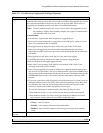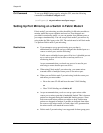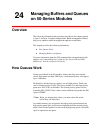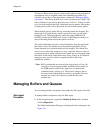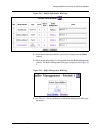
User Guide for the Avaya P580 and P882 Multiservice Switches, v6.1 24-1
24
Managing Buffers and Queues
on 50-Series Modules
Overview
The following information and procedures provided in this chapter pertain
to layer 2 and layer 3 module configurations. Buffer management features
help you to optimize traffic throughput through the switch fabric.
This chapter provides the following information:
■ How Queues Work
■ Managing Buffers and Queues
For more information about the CLI commands that are mentioned in this
chapter, see Command Reference Guide for the Avaya P580 and P882
Multiservice Switches, Software Version 6.1
How Queues Work
Frames are buffered in the I/O modules, before and after traversing the
switch. Each queue can hold 256K bytes. (Architecturally they can support
up to 1 MB each).
Each buffer is divided into two queues, one for High-priority Traffic and
one for Normal-priority Traffic. The factory default is for the high-priority
queue uses 20% (51K) of the buffer. The normal-priority queue uses the
remaining 80% (205K). These values can be modified using either the Web
Agent or SNMP.
* Note: When you change these values, you must reboot the switch
before they can take effect.
Less buffer memory gets assigned to the high-priority queue because the
high-priority queue gets serviced more frequently than the normal-priority
queue. Since a frame spends less time on the high-priority queue, less buffer
space is required for the queue.



